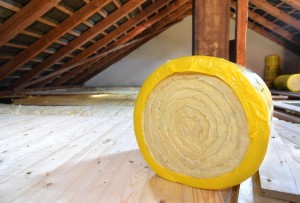Effectively Insulating Your Home Can Save You Energy
Proper home insulation plays a big role when it comes to achieving optimal energy efficiency. Insulation regulates your home’s temperature, retaining heat in the winter and keeping excessive amounts of heat out during the summer. There are a variety of different types of insulation for your home as well as the different areas of your home that should be insulated.
- Insulation reduces average home heating and cooling costs by around 20%.
- Insulation is also good for the environment—the current insulation in U.S. buildings saves 780 million tons of carbon emissions each year. This is equivalent to roughly 5.5 barrels of oil’s worth of pollution per American!
- Aside from all of their other benefits, most forms of insulation (fiberglass, rock wool, and slag wool) are easily reusable, meaning they don’t have to be wasted after being used in only one home.
Types of Insulation
There are many different types of insulation, including but not limited to:
- Blanket insulation, which generally comes in the form of batts and rolls. This is the type of insulation you are most likely familiar with; you can buy it at your local hardware store.
- Concrete block
- Insulating concrete block
- Foam board
- Insulating concrete forms
- Loose-fill and blown-in
To learn more about the different varieties of insulation, click here.
Attic Insulation
Before considering your attic’s insulation, be sure that your roof receives a quality check-up to eliminate any air leaks or the need for additional repairs shortly after installing insulation.
Attic insulation generally requires either loose-fill insulation or batt insulation, with most consumers choosing loose-fill for its lower cost of installation.
If you live in a warm climate, consider installing a radiant barrier in your attic as well to reduce summer heat build-up.
Duct Insulation
You should insulate your ducts if they are not in a conditioned portion of your home. If you are planning on building a new home, you definitely want to run your ducts through a conditioned part of your home area of your home.
Exterior Wall Insulation
The insulation in your home’s exterior walls is one of the first lines of defense between your home and the outside weather, and there are many options for you to choose from.
If you are updating your home and need to add insulation, opt for blow-in insulation. This will provide the insulation you want without causing much of a disturbance to the finished living areas inside your home.
However, if you are remodeling your home, look into a two-part system of spray foam and wet spray cellulose insulation. This is not as easy to install if you aren’t remodeling, so take advantage of the fact that you will be tearing down walls to ensure you have better insulation options.
Lastly, remember that if you aren’t going to hire a professional, blanket insulation is the easiest to work with—and it’s pretty affordable.
Foundation Insulation
Insulation in your home’s foundation not only reduces heating costs; it regulates your foundation’s moisture levels, reducing the possibility of water damage or insect infestation. Insulating a home’s foundation is generally done during the early stages of construction for a home.
If you believe you need to have your home’s foundation insulated, contact a licensed insulation professional.
For further information about insulating your home, click here.

